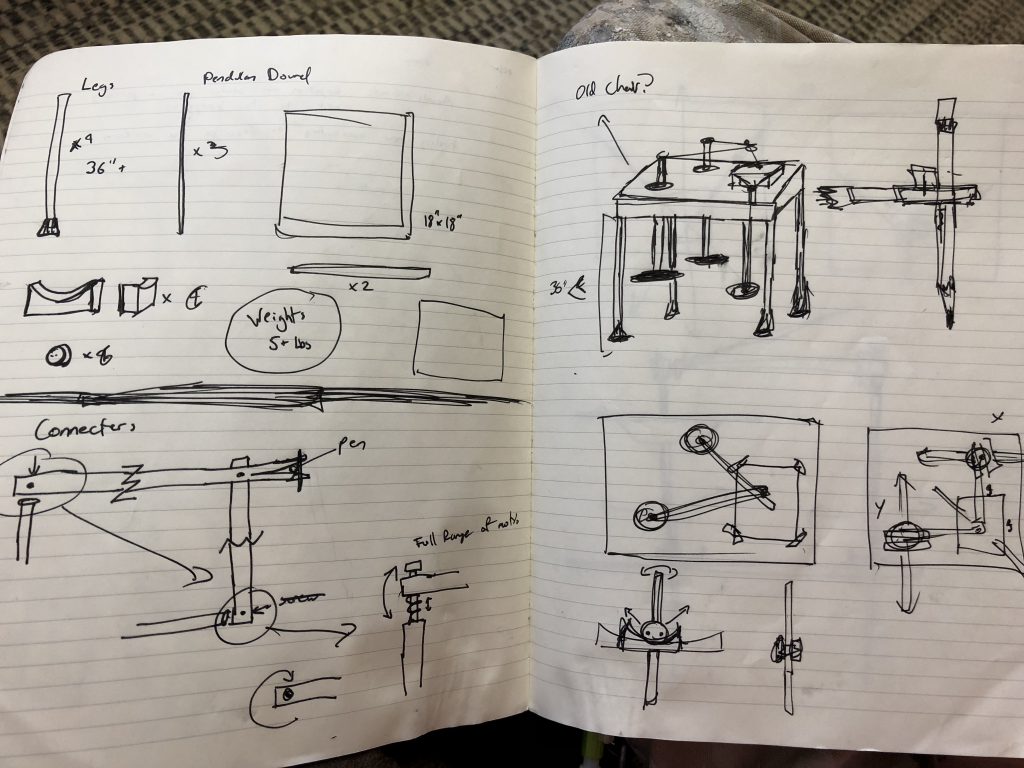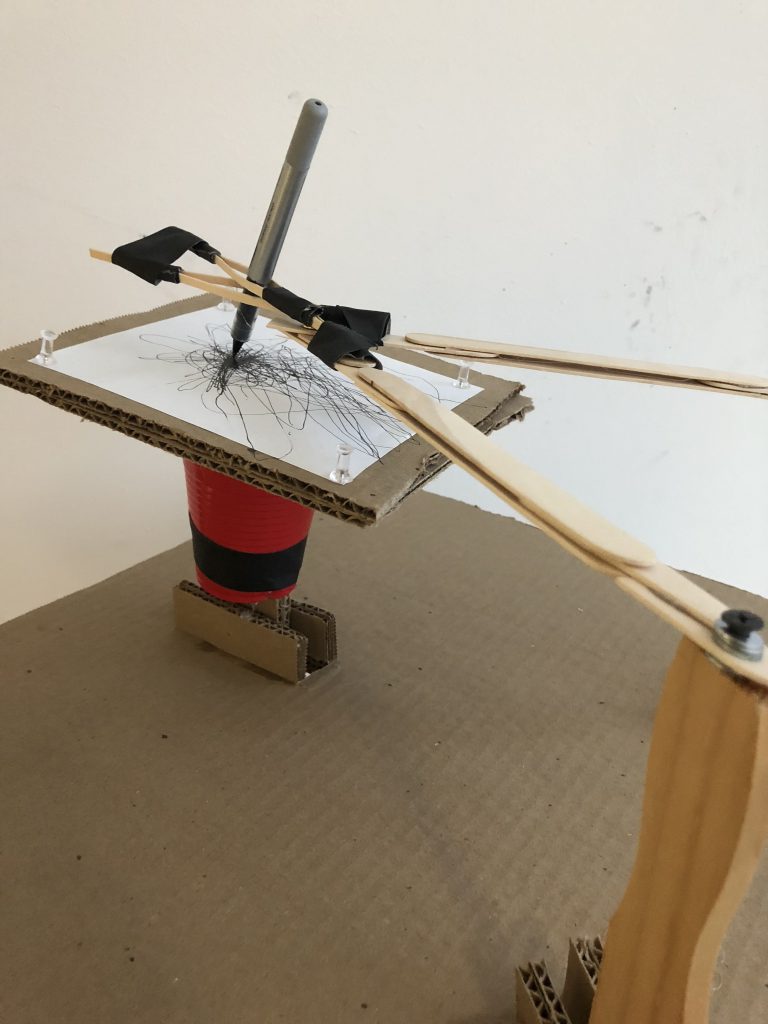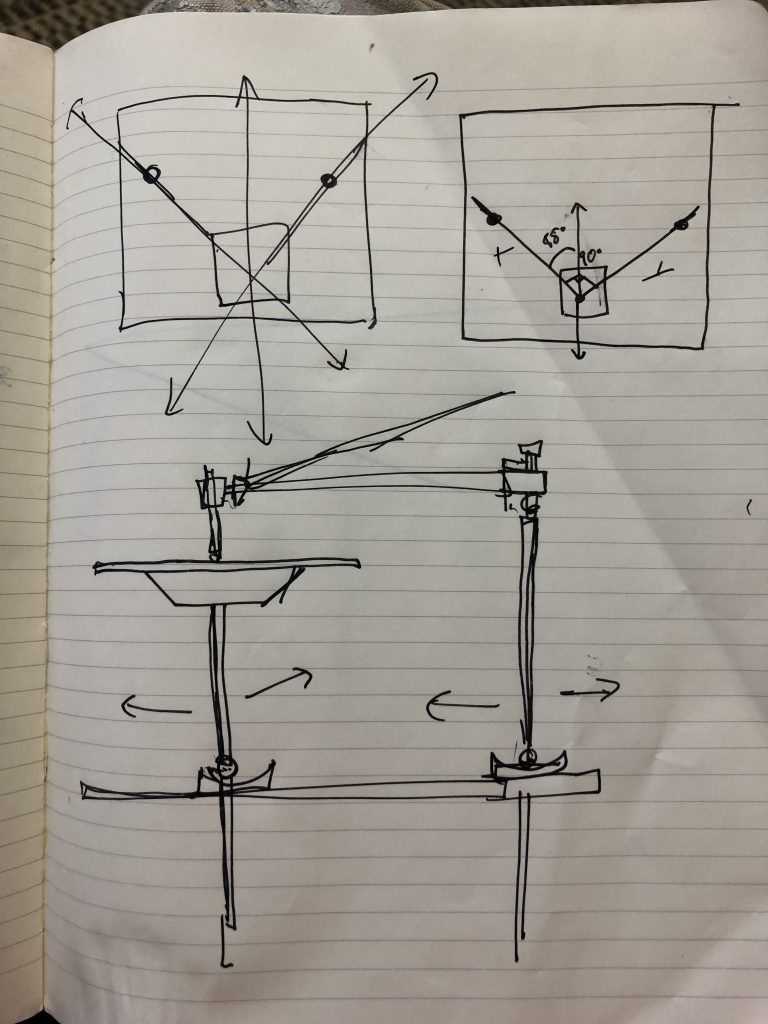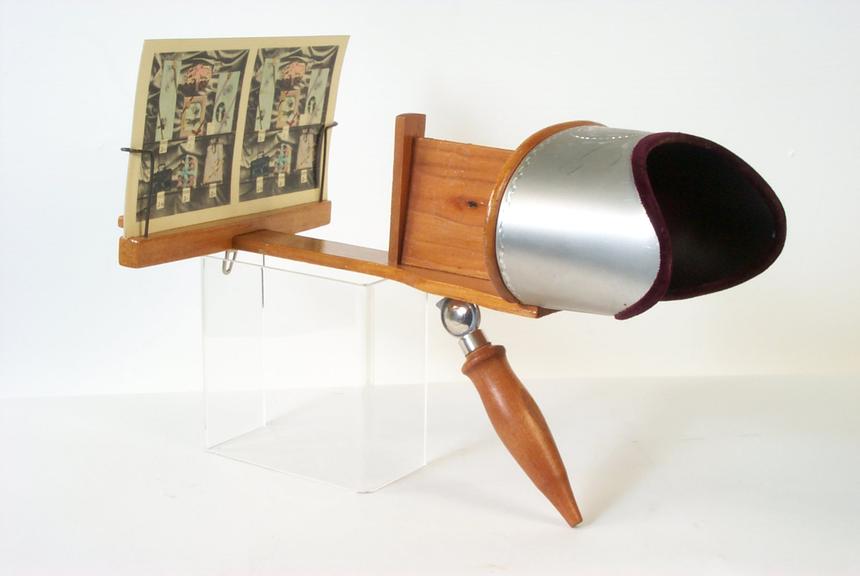The initial goal of my conference project was to apply Hans Haacke’s methodology to a drawing machine. His institutional critique and social critique seemed rather far removed from the relatively simple drawing machines that we had been creating thus far. I eventually chose to create a machine that would poke fun at our constant expectation of machines to provide the services that they were created for. I was looking to make a machine with a very specific and highly precise purpose that it ultimately would either be unable to do, or do in such a shoddy and improper manner that the machine would have little to no purpose. I chose a harmonograph as the starting point for my machine. I spent a week designing a model of a harmonograph that could be reproduced in cardboard. I made detailed diagrams of how I would accomplish each of the linkages and joints, and made three or four drafts to ensure that I could troubleshoot and perfect the design before I even begun construction
Once I designed the harmonograph to the best of my ability I waited until an open studio time to being building. I wanted the building process to be the polar opposite of the design process. It was to be rushed, rough, and unfinished. I wanted to make the entire machine within a two hour period using whatever supplies I had at my disposal. The construction process was easier than I thought. Despite roughly 10 hot glue gun burns and countless discarded miss-measuered cardboard pieces I was able to create my harmony-graph in roughly 90 minutes.
The harmonograph is based of the movement of three different pendulums. Two connected to the pen, representing the x and y axis, and a third connected to the drawing pad, offset by 45 degrees from both of the pen pendulums. In theory this machine, given a meticulous construction and precision part, will create a incredible fractal like drawing. My harmonograph was only able to draw for about 5-10 seconds compared to the minutes and even hours that proper harmonographs are capable of.
All in all I am extremely happy with how my machine turned out. It has all the parts it needs to work well, but the total construction just is simply not up to the challenge of performing it sole purpose. There are no clear flaws, just a medley or poorly cut/designed/implemented features. The machine takes your expectations of creating a perfect drawing and lets you down by creating a sloppy excuse for a harmonograph drawing.







